All products featured are independently chosen by us. However, SoundGuys may receive a commission on orders placed through its retail links. See our ethics statement.
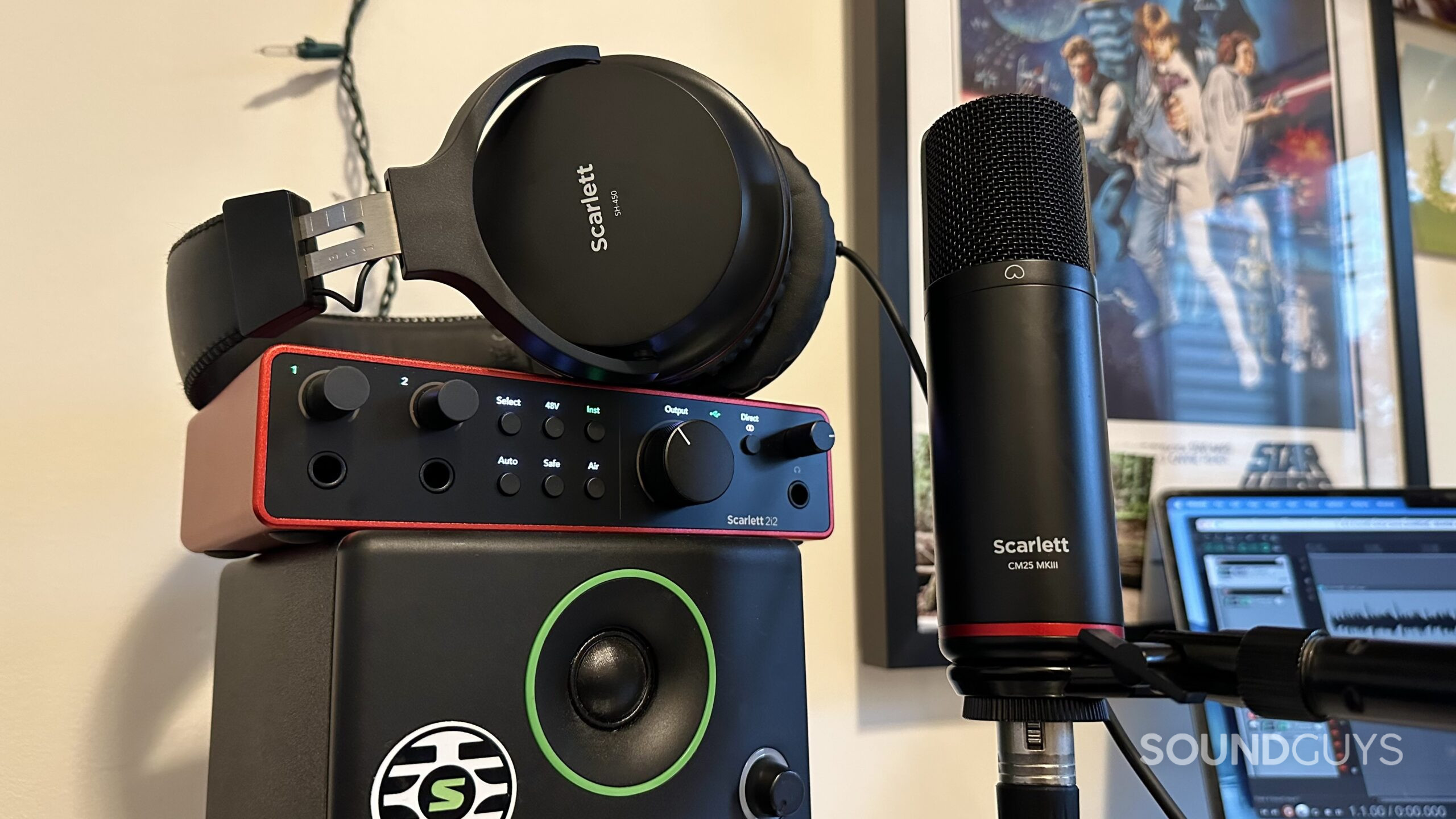

Focusrite Scarlett 2i2 Studio (4th Gen) review
Published onNovember 8, 2024


Focusrite Scarlett 2i2 Studio
If you’re a musician who’s ready to hit the record button finally, you’ll need a few essential studio tools—specifically an audio interface, a microphone, and a pair of headphones. Is the Focusrite Scarlett 2i2 Studio the ultimate purchase to kick-start your career as a recording artist? I plug in, hit record, and lay down a few tracks in this Focusrite Scarlett 2i2 Studio review, using all its components to determine if they’re up to the task.
Editor’s note: this is the first version of the article. Updates will follow as the market changes.
What I like about the Focusrite Scarlett 2i2 Studio
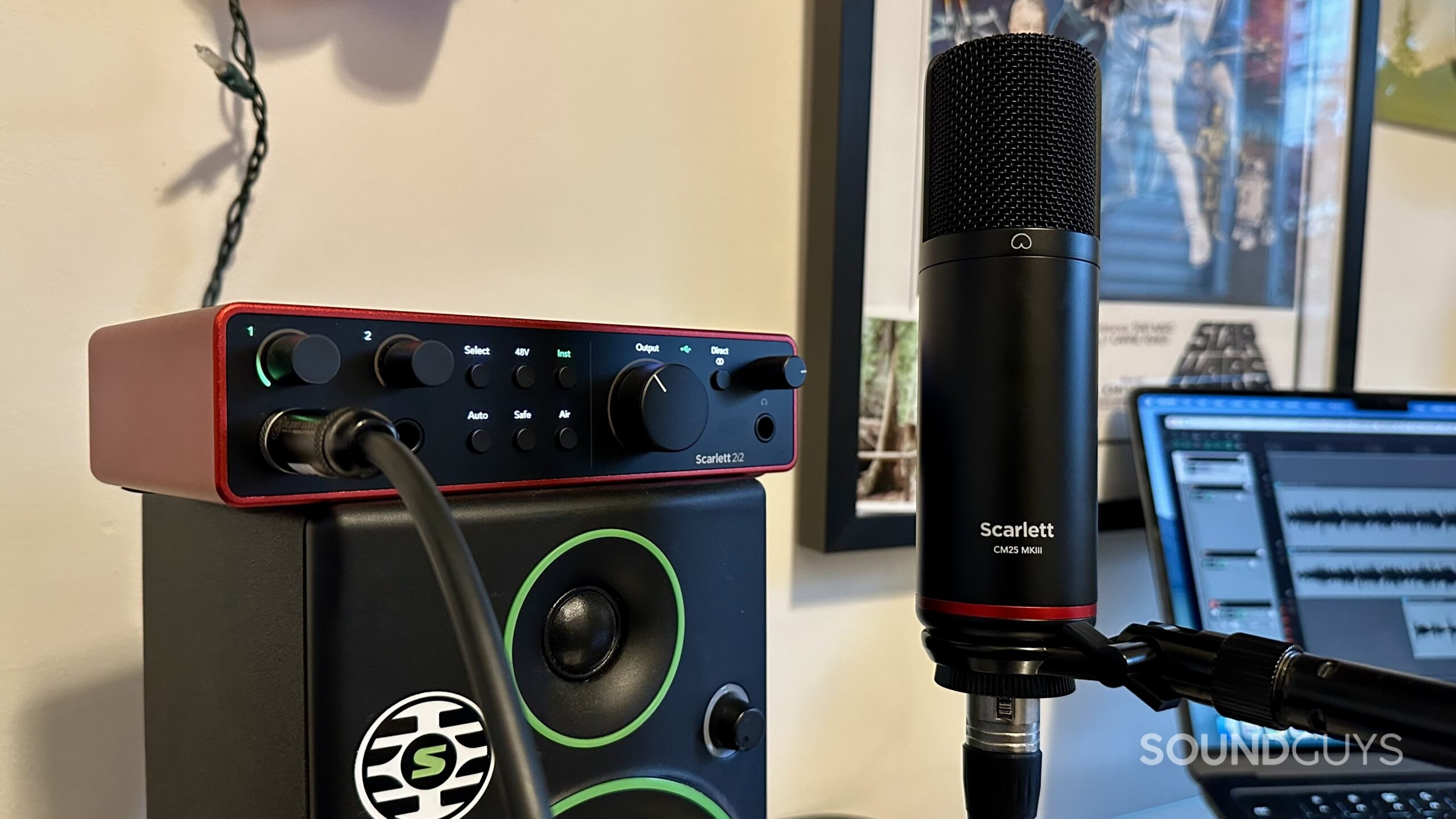
The Focusrite Scarlett 2i2 (4th Gen) Studio includes a Scarlett 2i2 (4th Gen) audio interface, a Focusrite CM25 MKIII condenser microphone, a pair of Focusrite SH-450 over-ear headphones, and an XLR cable. It’s precisely what you need to record some acoustic or electric guitar and vocals. The 2i2 connects to your computer via USB-C and offers a total of two inputs and two outputs. You’ll find two Hi-Z 1/4″ instrument inputs on the front of the unit, which is great for recording electric guitars with an amp simulator, and two balanced XLR mic pre-amp inputs on the rear for use with the condenser mic.
The Scarlett 2i2 (4th Gen) is an incredibly popular audio interface. High quality mic pre-amps aside, the 4th Gen offers a few handy features like Clip Safe, which automatically adjusts your levels on the fly to prevent you from getting into the red and distorting, and Air Mode, which can add presence and clarity to your vocal tracks.
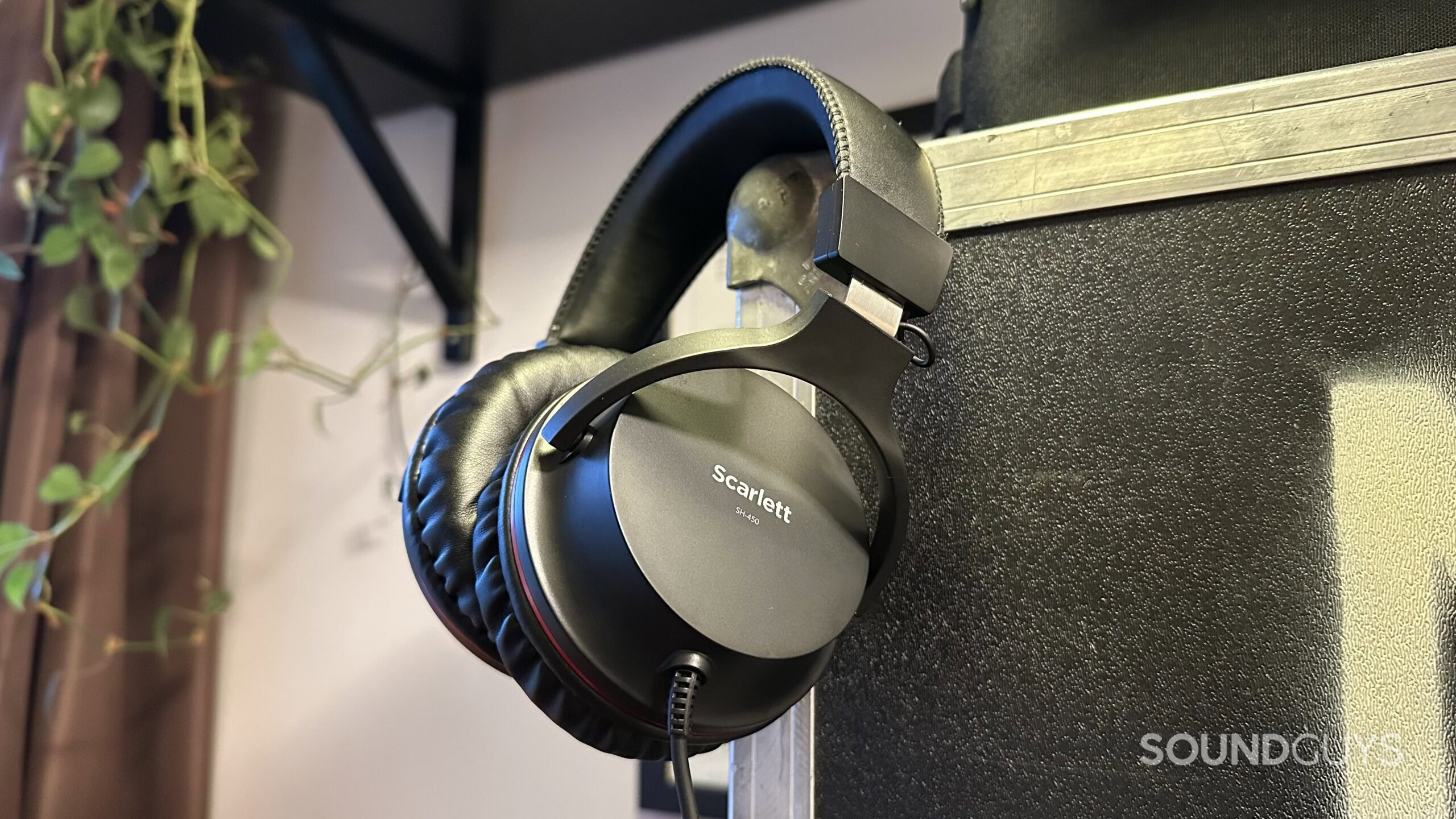
The Focusrite CM25 MKIII condenser microphone offers a cardioid pickup pattern and is voiced for recording acoustic guitars and vocals. Considering it’s a $50 microphone, it does a decent job fulfilling those tasks. The SH-450 headphones are incredibly lightweight and comfortable, thanks to a fair amount of padding on the ear cups and headband. They do the job but aren’t much to get excited about. Let’s remember that the 2i2 interface is the real meat and potatoes of this bundle.
But enough talk; how does this setup sound to you? I recorded the following demos using Reaper as my DAW in my small home office, which is a room like any other. It has no acoustic treatment of any kind.
Acoustic Guitar Demo
I recorded my trusty, smaller Yamaha FG830 acoustic guitar for this demo. It’s not an expensive guitar; it’s priced around $400. There are three tracks total, and I had the CM25 MKIII microphone pointed at the 12th fret of the guitar. Two tracks are panned hard left and right and have no additional processing. The “lead” track is down the center, but I added a bit of reverb from a stock Reaper plug-in for some texture to help it stand out. A little goes a long way!
Singing with “Air Mode”:
As mentioned, the Scarlett 2i2 (4th Gen) offers “Air Mode” to enhance the presence and clarity of your vocal recordings. I’m not much of a singer, but here’s a quick Johnny Cash line with “Air Mode” engaged.
Singing without “Air Mode”
It’s subtle, but without Air Mode, this take doesn’t quite offer the same clarity, especially with words like “sunshine” and “since.” While you could achieve similar Air Mode results by increasing some treble frequencies via an EQ plug-in, hitting a button is much easier. I am a fan.
Folsom Prison Blues “Full Band Mix” (Air Mode Engaged)
I got a little carried away with this one, but I wanted to know if Air Mode made a significant difference in a full-band mix. It was also an opportunity to use the 1/4″ Hi-Z instrument inputs. They provide enough gain to get a usable signal with just a regular 1/4″ unbalanced guitar cable, and I find it responds to my playing well in real-time without any latency.
I used the same acoustic guitar and recorded two left and right rhythm tracks. Down the center is the clean electric guitar courtesy of my Danelectro 57, with tones and reverb supplied by my favorite amp simulator plug-in, the Neural Archetype Gojira X. While I didn’t have a bass guitar handy, I was able to use the amp sims pitch-shifting feature to drop the clean guitar down one whole octave to simulate a bass guitar. Lastly, I programmed some basic MIDI drums using Steven Slate Drum Samples. Of course, what’s a little Johnny Cash without some reverb on your voice?
Folsom Prison Blues “Full Band Mix” (Without Air Mode Engaged)
It’s one of those things you can’t unhear after you’ve learned what to listen for with Air Mode. Again, it’s subtle, but I prefer the extra clarity in the previous recording that Air Mode provides.
Focusrite CM25 MKIII speaking demo:
Lastly, this is just my regular speaking voice. Right off the bat, you can hear the mic has trouble reducing the plosive in the word podcast and again in the word processing, even with the foam windscreen on. Condenser mics are fairly sensitive, and as mentioned, they’re ideal for recording intimate vocals and capturing the details of instruments like acoustic guitars. If you’re keen on podcasting, you’ll want to consider a dynamic microphone like the Shure MV7+.
What I don’t like about the Focusrite Scarlett 2i2 Studio
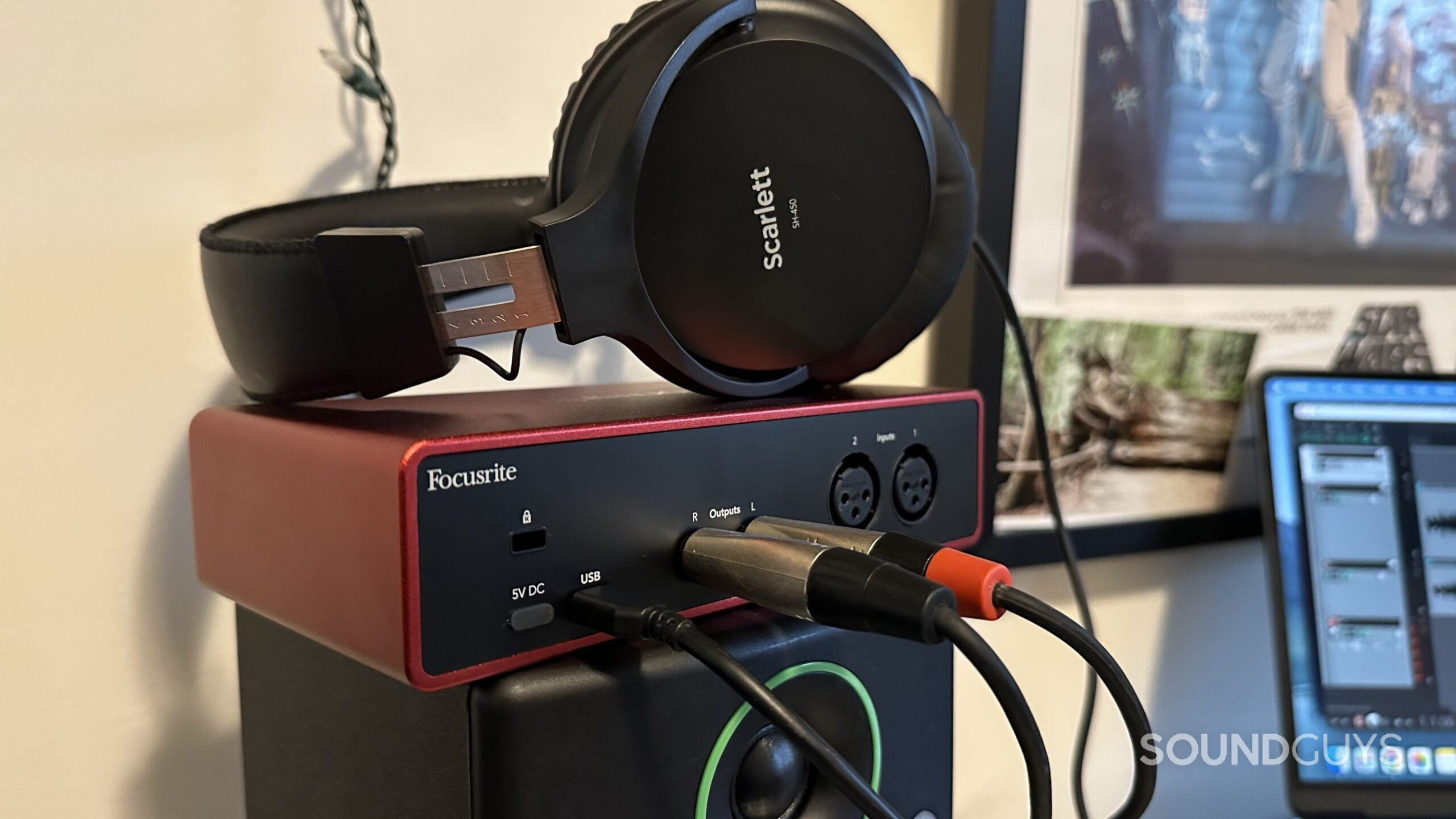
The Scarlett 2i2 Studio is almost ready to go out of the box. One additional purchase you will have to make is a microphone stand—ideally, a boom stand to help with placement when recording acoustic guitars and vocals. Understandably, though, Focusrite can’t exactly cram one into the cardbox box with the rest of the gear it comes with. You will also need to purchase a 1/4″ instrument cable if you wish to record any electric guitars.
Again, the real meat and potatoes of this bundle is the 2i2 interface, which you can rely on for years as your primary interface. While the included CM25 MKIII microphone is great for recording demos and getting your ideas down, it’s a $50 microphone. Once you’re comfortable recording yourself and others or find yourself getting more serious about your music production, you will likely want to invest in something of higher quality, like the Rode NT-1A. The same goes for the included SH-450 headphones. When you’re ready, consider making the jump up to something like the studio-friendly Sennheiser HD280 Pro.
Should you buy the Focusrite Scarlett 2i2 Studio?
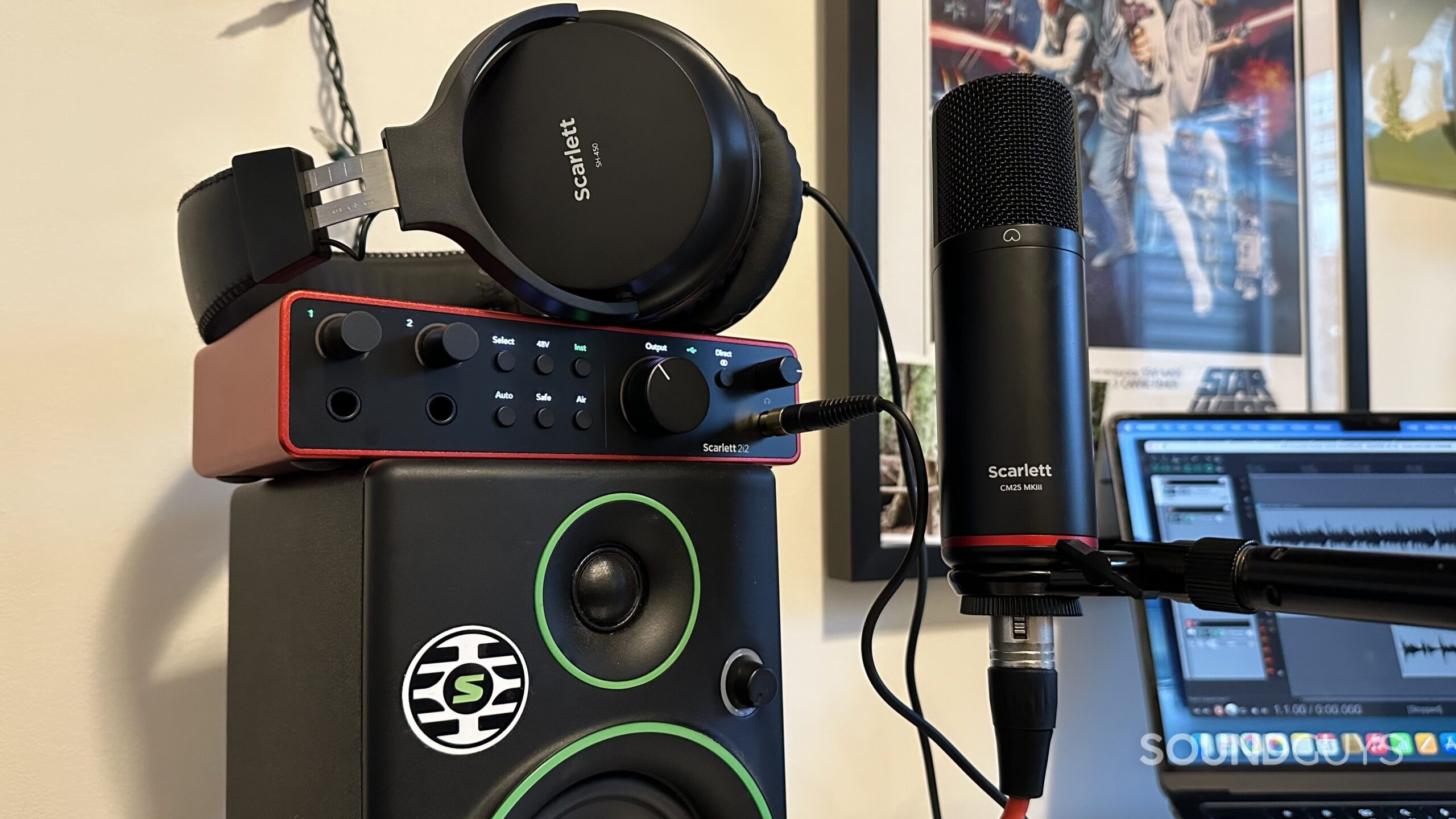
The Focusrite Scarlett 2i2 Studio (4th Gen) is an excellent choice for anyone exploring music production or recording their song ideas on a budget. The Scarlett 2i2 (4th Gen) is a high-quality audio interface that you can rely on for years to come, and its features, like Clip Safe and Auto Gain, are convenient for beginners.
While higher-end headphones and microphones are available, the CM25 MKIII and SH-450 will get the job done in the meantime and don’t add much to the overall cost. You’re essentially paying an extra $100 for a condenser mic, headphones, and an XLR cable, which isn’t a bad deal by any means. Once your skills and recording techniques have improved, or you’re ready to take music production more seriously, you can consider upgrading.

Focusrite Scarlett 2i2 Studio review: FAQs
Yes, the Scarlett 2i2 offers both stereo recording and stereo playback.
Yes, the Scarlett 2i2 Studio will work with FL Studio.
The 2i2 Studio bundle comes with a Focusrite 2i2 audio interface, Focusrite headphones, a Focusrite condenser microphone, and an XLR cable. The 2i2 is the audio interface only.
Yes, you will need a DAW to use the Scarlett 2i2. Fortunately, it comes with three DAW options to help get you started. You can choose from Ableton Live Lite, three months of Pro Tool Artist, or 6 months of FL Studio Producer Edition.